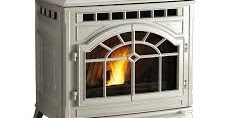Yesterday was a historic day for wood heaters, and while tough for many retailers, should result in generally cleaner stoves over time. But, some pretty famous stove models aren't going to be 2020 compliant, and will go the way of Fisher stoves and others that couldn't make the cut in 1988. Here is our list,

 forgreenheat.blogspot.com
forgreenheat.blogspot.com
and thoughts about how EPA and HPBA handled the transition. The last descendend of the Whitfield stoves - the Lennox/IHP Montage is one of them.
John

May 15, 2020: a historic day for wood heat technology
Wood stove, pellet stove, NSPS, EPA, PM, grams per hour, efficiency, LHV, HHV, cleanest, best, carbon neutral, biomass, tax credit, IRS, certified
and thoughts about how EPA and HPBA handled the transition. The last descendend of the Whitfield stoves - the Lennox/IHP Montage is one of them.
John

